Engineered wood floors are a popular choice for luxury homes. Not only do they look great and bring a level of warmth and comfort that no other flooring material does, but they are extremely practical too. At the same time, some homeowners often voice some concerns which we will attempt to clarify in this series of blogs. We will pick one misconception per blog to make it easier for the reader. The aim is to help the reader (luxury home owners, designers, architects, project management consultants, civil contractors, supervisors etc) make decisions based on factual data.
Myth 1: Engineered wood floors are not real wood
This is one of the most common myths about engineered wood floors. Some people think that engineered wood floors are made of synthetic materials. This may have happened, to some degree, from the term “Engineered”. Let us clear this up first: According to Cambridge Dictionary, the word Engineered means “Designed and built using Scientific principles”. The scientific fact that wood moves (expands, shrinks, distorts) with changes in humidity and moisture is well known. Keeping this fact in mind, someone smart “engineered” a solution to the problem of too much expansion, contraction & distortion. In the early days, real wood flooring used to be simple – You cut the tree, take the good part of the wood, mill (shape) it into long flooring planks, and finish it to the desired color and with a coating that will prevent it from abrasion under foot traffic (there were more steps but we are keeping it simple here).
Solid Wood Flooring!

Now this flooring being completely solid, reacts much to changes in humidity. For the end user, it would mean that when the room air gets very dry, the wood will loose inherent moisture and shrink. That is why you would have seen gaps between flooring planks in old wood floors which collect dirt.
Solid Wood flooring with Gaps
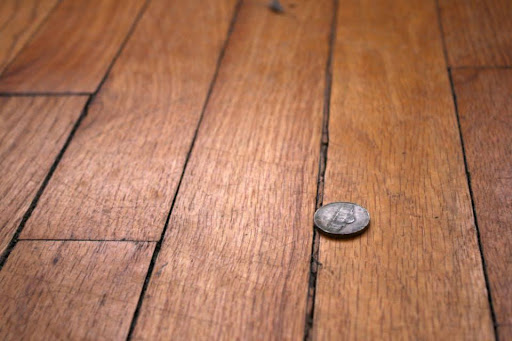
Photo credit – © Schmidt Custom Floors
Viceversa, during periods of high humidity, the solid wood planks would expand a lot, sometimes causing a “jump” in the floor – you walk over a floor and it feels that it is pressing down. Creaking sound is another manifestation that could arise from this constant movement.
Bridging and Buckling of Solid Wood Floor
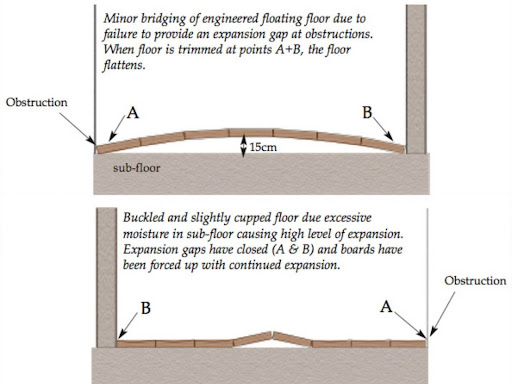
Photo credit – © Floorsave
Solid Wood Flooring Buckled!
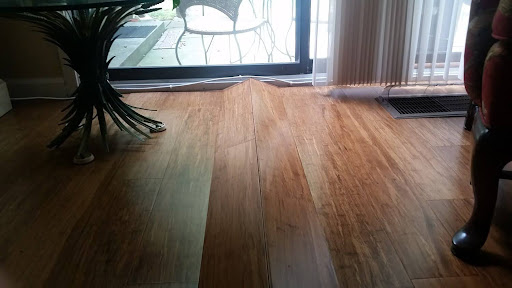
Photo credit – © Kaltimber
Now to solve this problem, real wood floors started to be “Engineered”. Some really smart and observant people engineered the solid wood plank in such a way that it moves much less, making it much more suitable for flooring purposes. Keeping the top layer of the flooring plank 100% real wood (the bottom may be solid wood too or plywood or a fiber board), they figured out a cross ply construction for the bottom that makes the flooring plank much less prone to these changes in humidity and therefore very stable.
Solid Wood Flooring vs Engineered Wood Flooring!

So, engineered wood floors are basically real wood floors just constructed in a different way to make them more practical for users. In terms of how they look after installation, well you would not be able to differentiate. See actual installations below:
Installed Engineered Wood Flooring!
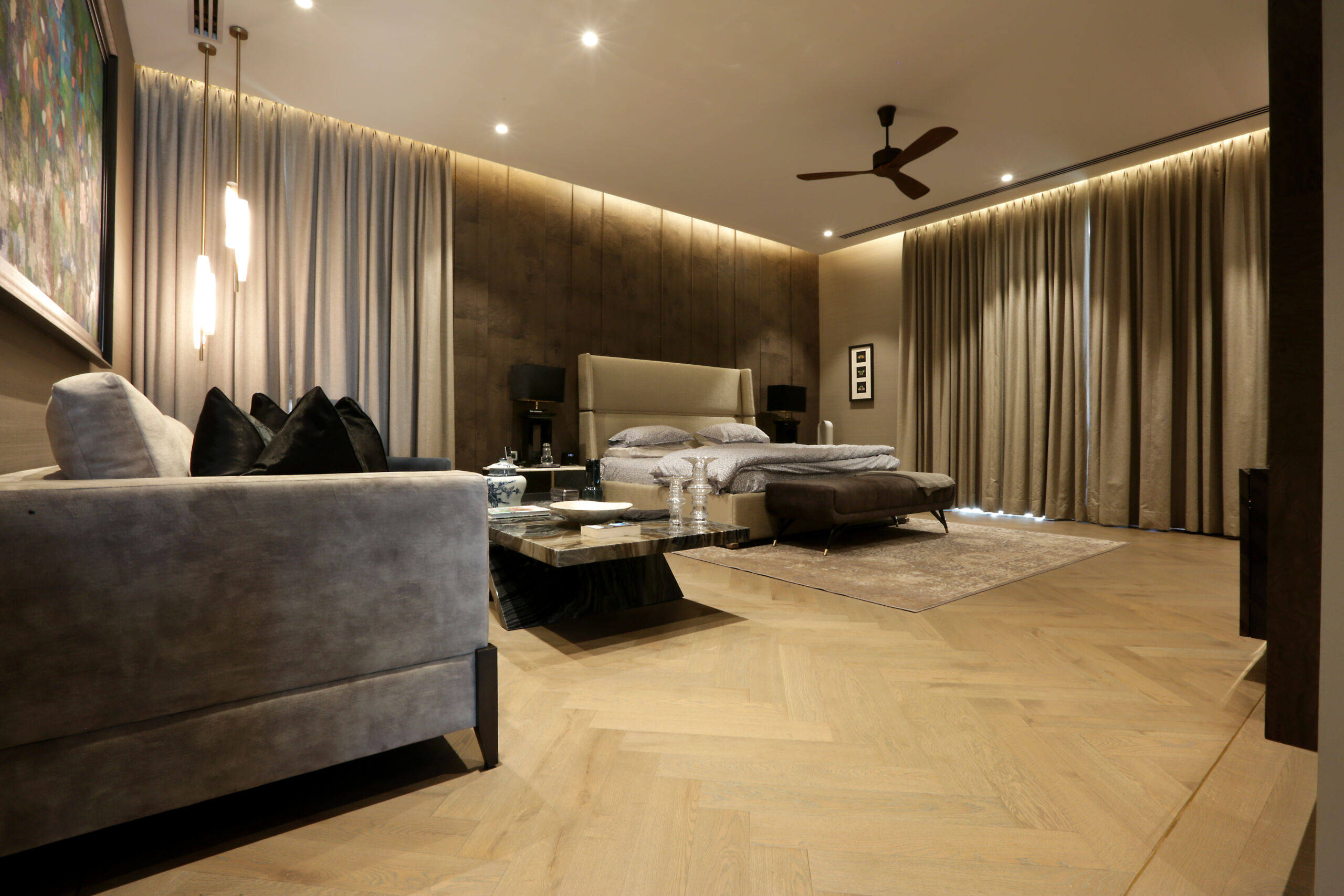
Installed Solid Wood Flooring!
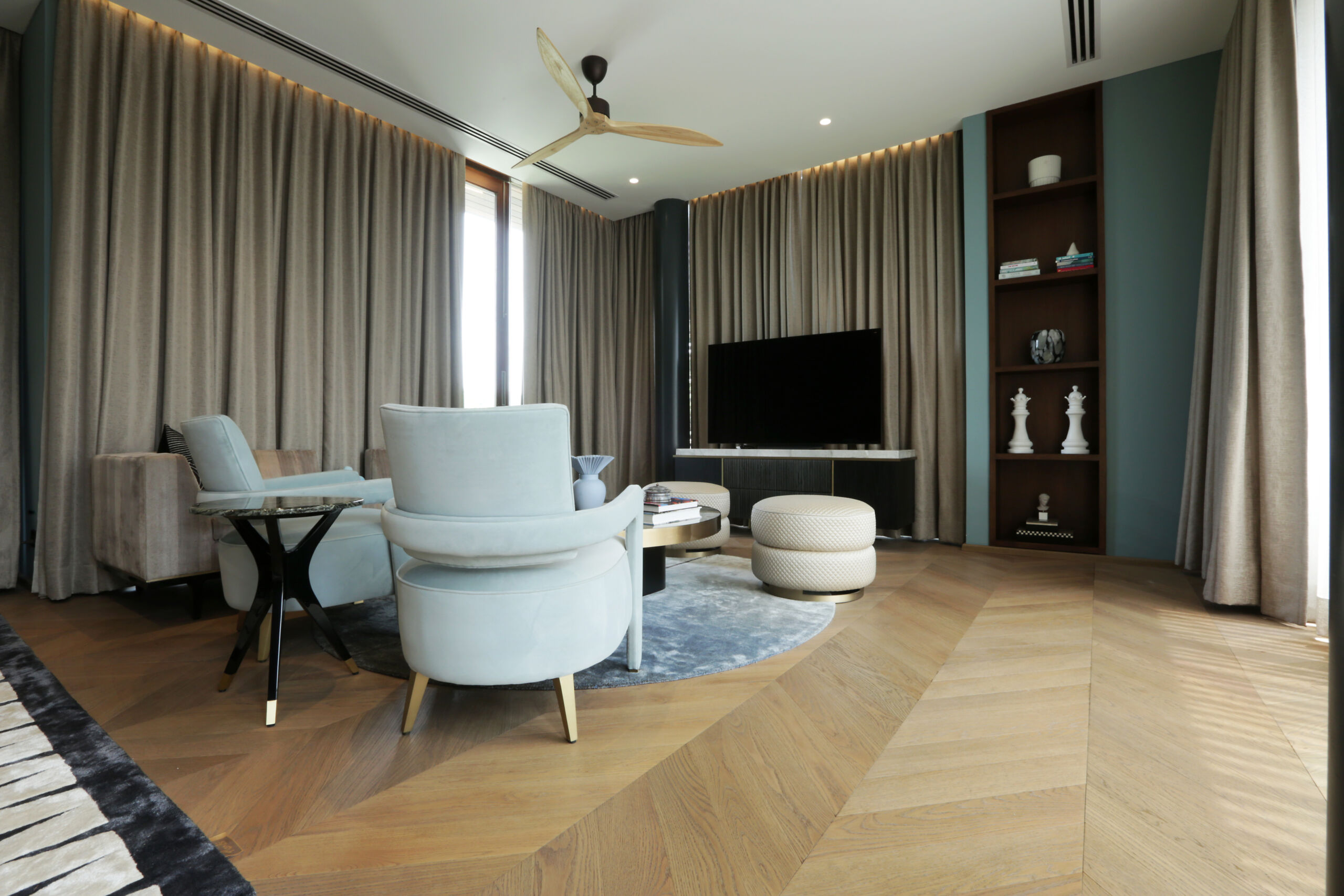
As you can see, you can not make out the difference by a visual inspection. Both look the same. Do reach out to us if you are planning to use engineered wood floors in your project or simply have any questions. We have an extensive range of engineered wood floors in our well curated collection that works with a variety of interior design trends in 2024! Just send us an email, WhatsApp us or simply pick the phone and call us at 9971509922. We are ready to help 😊

